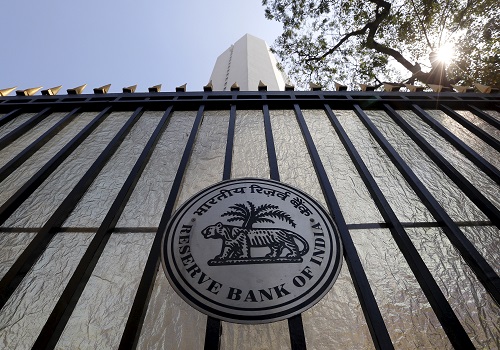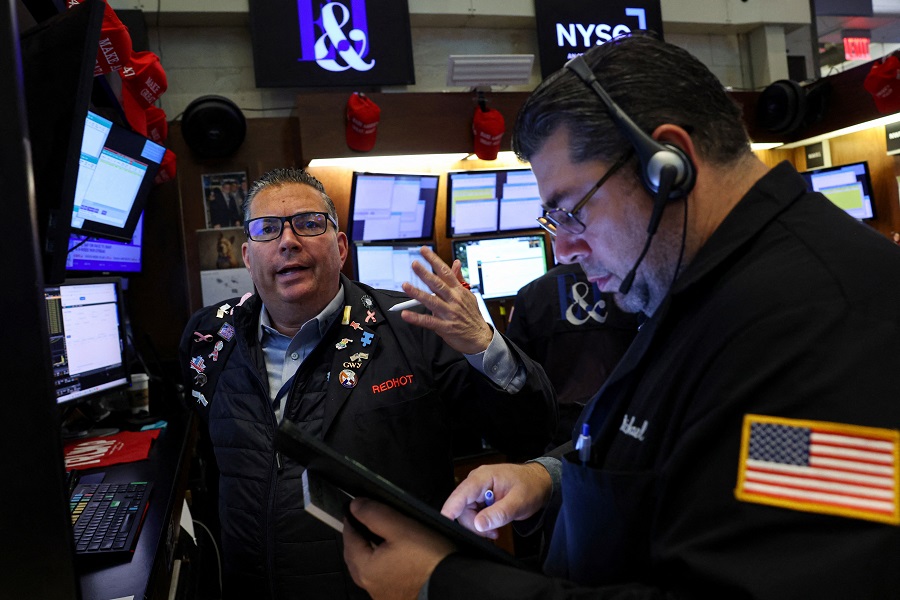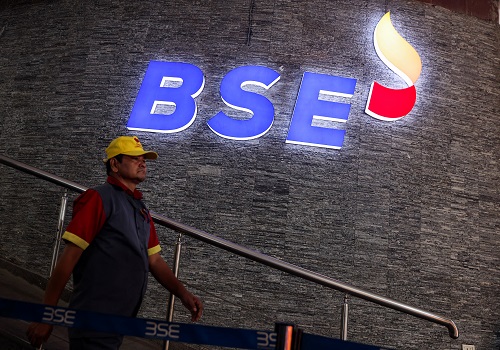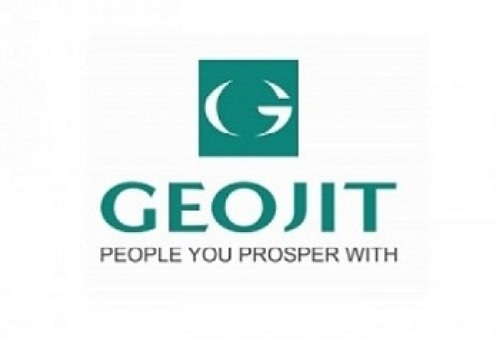Gold trading range for the day is 71100-72530 - Kedia Advisory

Follow us Now on Telegram ! Get daily 10 - 12 important updates on Business, Finance and Investment. Join our Telegram Channel
Gold
Gold prices settled up by 0.63% at ?71,917, driven by weakness in the U.S. labor market, as private companies added fewer jobs than expected in August. ADP's report showed only 99,000 new jobs, significantly below the forecasted 144,000. This economic uncertainty has fueled safe-haven demand for gold, pushing the precious metal up 22% so far this year, marking its biggest annual gain since 2020. Central bank purchases also continue to bolster prices, with net acquisitions more than doubling to 37 tonnes in July. Notably, the Reserve Bank of India added 5 tonnes to its gold reserves, bringing its total for 2024 to 43 tonnes. However, gold demand in major markets like India and China has been subdued. In India, gold discounts widened to $8 per ounce as higher prices dampened retail buying, with consumers waiting for prices to stabilize. The upcoming festival season, combined with a reduction in import taxes, is expected to revive demand in the latter half of 2024. In China, demand has been lackluster since May, with discounts ranging from $1 to $10 per ounce as high prices and weak consumer sentiment persist. Other Asian markets like Singapore and Hong Kong saw mixed premiums, while Japan witnessed a small discount. Technically, the market witnessed fresh buying, with open interest rising by 1.96% to 15,362 contracts. Gold has immediate support at ?71,510, and a break below could lead to testing ?71,100. On the upside, resistance is seen at ?72,225, and a move above this level could push prices toward ?72,530, indicating potential further gains.
Trading Ideas:
* Gold trading range for the day is 71100-72530.
* Gold prices climb higher after ADP says private sector created 99K jobs in August
* US Private-sector payroll processor ADP said that 99,000 jobs were created last month
* Even as gold prices set new all-time highs, net purchases by central banks more than doubled to 37 tonnes in July
Silver
Silver prices surged by 1.66% to settle at ?84,956, driven by growing expectations of a deeper U.S. Federal Reserve rate-cut cycle, which could start as early as this month. U.S. job openings dropped to a 3.5-year low in July, signaling a cooling labor market, further fueling speculation of an imminent rate cut. According to the CME FedWatch tool, there is now a 57% chance of a 25-basis-point cut and a 43% chance of a 50-basis-point reduction in the upcoming Fed meeting. Additional data revealed that U.S. employers cut 75,891 jobs in August 2024, the highest in five months, while private businesses added only 99,000 jobs, well below expectations of 145,000. These figures reinforce the view that the U.S. labor market is softening, adding momentum to rate-cut speculations. India’s silver imports are on track to nearly double this year, driven by demand from the solar panel and electronics industries, along with increased investor interest. India, the world’s largest silver consumer, imported 4,554 tons of silver in the first half of 2024, a significant jump from 560 tons a year ago. This surge in imports is attributed to stockpiling by industrial buyers to guard against potential price increases. Technically, the silver market is seeing short covering, with open interest down by 9.54% to settle at 29,184 contracts. Silver has immediate support at ?83,685, and a break below could test ?82,420. On the upside, resistance is likely at ?86,080, and a move above could push prices toward ?87,210.
Trading Ideas:
* Silver trading range for the day is 82420-87210.
* Silver rose fuelled by expectations of a deeper U.S. Federal Reserve rate-cutting cycle
* Data showed that U.S. job openings dropped to a 3-1/2-year low in July, suggesting the labour market was losing steam.
* US employers announced 75,891 job cuts in August 2024, the most in five months
Crude oil prices settled down by 0.7% at ?5,810 amid concerns over the demand outlook despite a larger-than-expected drop in U.S. crude inventories. U.S. crude inventories fell by 6.9 million barrels in the last week of August, significantly above the forecasted 1.1 million-barrel draw, marking the ninth consecutive decline in ten months. Additionally, stocks at the Cushing, Oklahoma hub fell by 1.1 million barrels, and distillate fuel inventories dropped by 0.4 million barrels, against expectations of a 1 million-barrel build. However, gasoline inventories rose by 0.8 million barrels, defying forecasts of a 0.7 million-barrel draw. OPEC+ is nearing a decision to delay a planned 180,000-barrel per day output increase in October, as crude prices have hit their lowest in nine months. The group is holding back 5.86 million barrels per day of output, around 5.7% of global demand, to support prices amid uncertain demand and rising supply from outside the group. Libyan oil exports remain largely halted due to a political standoff, though some tankers are loading from storage. Meanwhile, Venezuela's August oil exports reached their highest level in four years, driven by increased shipments to China, the U.S., and Europe. Technically, the crude oil market is under fresh selling pressure, with open interest rising by 2.97% to 21,179 contracts. Crude oil prices have immediate support at ?5,752, and a break below this could see prices testing ?5,695. On the upside, resistance is seen at ?5,914, and a move above this level could push prices toward ?6,019.
Trading Ideas:
* Crudeoil trading range for the day is 5695-6019.
* Crude oil settled lower due to concerns about the outlook for demand
* Crude oil inventories in the US slumped by 6.9 million barrels.
* Libya oil exports still mostly shut, some ships loading from storage
Natural gas
Natural gas prices surged by 5.7% to settle at ?190.9, driven by supply constraints and steady demand. The US National Hurricane Center’s warning of potential cyclonic activity in the Gulf region added to concerns, as this could disrupt LNG shipments. Additionally, record-high temperatures in the Midwest increased air conditioning demand, further supporting prices. Data from LSEG showed that gas output in the Lower 48 U.S. states has averaged 102.2 billion cubic feet per day (bcfd) in September, down from 103.2 bcfd in August. On a daily basis, output is expected to drop to 101.7 bcfd, a preliminary 11-week low. The U.S. Energy Information Administration (EIA) revised its natural gas output forecast for 2024, estimating production to average 103.3 bcfd, a slight downgrade from its previous estimate of 103.5 bcfd. This is due to record-low prices earlier in the year, which led producers to curtail output. Consumption is expected to rise to 89.8 bcfd, up from the prior forecast of 89.4 bcfd. Furthermore, U.S. utilities added only 13 billion cubic feet of gas to storage during the final week of August, well below the market expectation of 28 billion cubic feet. However, overall inventories remain 6.6% higher than last year and 10.7% above the five-year average. Technically, the natural gas market is experiencing short covering, with a 26.36% drop in open interest, settling at 34,087 contracts. Immediate support is at ?181.9, and a break below this level could test ?173. Resistance is likely at ?196.1, and a move above could push prices toward ?201.4.
Trading Ideas:
* Naturalgas trading range for the day is 173-201.4.
* Natural gas jumped on a smaller-than-expected storage build.
* Support also seen amid rising gas flows to LNG export plants and a continued decline in output so far this month.
* US utilities added 13 billion cubic feet of gas into storage, reaching 3,347 billion cubic feet in the final week of August
Copper
Copper prices rose by 1.12% to ?792.2, driven by China's announcement of nearly $51 billion in investments to improve Africa's power networks. This move could increase industrial demand for copper, especially as the resource-rich continent seeks to address its power infrastructure shortcomings. However, the continued weakness in China's property and construction sectors poses a downside risk for industrial metals in the near term. Upcoming data releases on China's trade, inflation, and credit for August are expected to provide further insights into the demand outlook for copper for the remainder of the year. On a global scale, the refined copper market recorded a surplus of 95,000 metric tons in June, compared to 63,000 tons in May, according to the International Copper Study Group (ICSG). For the first six months of 2024, the market saw a 488,000 metric ton surplus, significantly higher than the 115,000 metric tons surplus during the same period in 2023. China's unwrought copper imports fell 2.9% in July compared to the previous year, reflecting weak demand and high stock levels. However, copper concentrate imports rose 9.6% in July, highlighting ongoing industrial activity. Technically, the market is under short covering as open interest dropped by 8.88% to 11,498 contracts. Copper has support at ?781.4, and a break below this level could push prices down to ?770.5. On the upside, resistance is expected at ?799.8, with a potential move above this level pushing prices to ?807.3. The current market environment suggests short-term volatility as traders await key economic data.
Trading Ideas:
* Copper trading range for the day is 770.5-807.3.
* Copper prices firmed up after China announced major investments in building power networks in Africa.
* China sees some room to lower reserve requirement ratio, PBOC official says
* China's release of August trade, inflation and credit data in the coming week is expected to shed more light
Zinc
Zinc prices declined by -1.74% to settle at ?256.95 as the Russian zinc miner Ozernoye unexpectedly resumed production earlier than anticipated following a fire that had delayed operations. The Ozernoye plant, located near Mongolia, has started zinc concentrate production and aims to process up to 6 million tons of zinc ore, with a goal of producing 600,000 tons of zinc concentrate by 2025. This development contributed to the bearish sentiment in the zinc market. In China, the People's Bank of China (PBOC) indicated plans to better align market interest rates with its policy rate, while also expanding its policy toolkit. Additionally, the global zinc market surplus narrowed to 8,700 metric tons in June from 44,000 tons in May, according to the International Lead and Zinc Study Group (ILZSG). However, for the first half of 2024, the market still shows a surplus of 228,000 tons. China's refined zinc production in July 2024 was 489,600 metric tons, down by 10.3% month-on-month and 11.15% year-on-year, primarily due to disruptions from heavy rainfall in Sichuan and unexpected production cuts in other regions like Yunnan and Guangdong. Maintenance activities in Henan, Inner Mongolia, and other provinces also impacted production. Technically, zinc is under fresh selling pressure, with open interest rising by 16.25% to settle at 2,768 contracts. Zinc has immediate support at ?254.9, and a break below this level could test ?252.7. On the upside, resistance is seen at ?259.7, and a move above this could push prices towards ?262.3.
Trading Ideas:
* Zinc trading range for the day is 252.7-262.3.
* Zinc dropped after Russian zinc miner Ozernoye started production.
* Russia launches major zinc concentrate plant after delays linked to fire, US sanctions
* China to better guide market rates to stay near policy rate, PBOC official says
Aluminium
Aluminium prices settled down by 0.16% at ?220.1, as weak U.S. manufacturing and labor market data sparked renewed concerns about a potential recession. However, downside pressure remained limited as the aluminium market enters its traditional peak demand season, with consumption gradually recovering. LME aluminium inventories have dropped by 22% over the past three months, reaching 877,950 tons, the lowest level since May 8. This inventory decline suggests tighter supply, which could support prices in the coming months. China's aluminium exports saw significant growth in July, with 146,708 tons of alumina exported, marking a 9.6% year-on-year increase. Additionally, 92.5% of these exports flowed into Russia. On the import side, China brought in 129,898 tons of primary aluminium, up 11.5% year-on-year. Despite the recent price decline, aluminium production remains profitable for Chinese producers, with July's output reaching 3.68 million metric tons, the highest in over two decades. Globally, primary aluminium production increased by 2.4% year-on-year in July, with China leading the charge. Chinese output rose by 2.5% to 3.69 million tons, while the rest of Asia saw a 3.3% increase to 408,000 tons. The global average daily production also rose to 199,800 tons in July. Technically, aluminium remains under fresh selling pressure as open interest increased by 2.64% to 3,850 contracts. Aluminium is currently finding support at ?218.1, with a potential test of ?216 if the support level breaks. On the upside, resistance is seen at ?222.1, and a move above this level could push prices towards ?224.
Trading Ideas:
* Aluminium trading range for the day is 216-224.
* Aluminium dropped as sentiment took a hit after weak US manufacturing and labor market data reignited recession fears.
* However downside seen limited as demand side is entering the traditional peak season, consumption is gradually recovering.
* LME aluminium inventory has dropped 22% in three months, the lowest since May 8.
Cottoncandy
Cottoncandy prices settled up by 0.27% at ?59,160, as the cotton acreage in the current kharif cropping season dropped by around 9%, totaling 110.49 lakh hectares compared to 121.24 lakh hectares last year. The Cotton Association of India (CAI) expects the total acreage to be around 113 lakh hectares this year, down from 127 lakh hectares in the previous year. This decline is attributed to cotton farmers shifting to other crops due to lower yields and high production costs. Additionally, the cotton balance sheet is expected to tighten due to increased exports to Bangladesh, with exports rising unexpectedly from 15 lakh bales to 28 lakh bales. India's cotton production and consumption for 2023-24 are expected to be balanced at around 325 lakh bales, with 28 lakh bales exported and 13 lakh bales imported. Stocks for the next year are projected to be tighter, especially if the new crop is delayed. Current stock levels include 25 lakh bales with spinning mills, 15 lakh bales with ginners, and 20 lakh bales with the Cotton Corporation of India, with another 10 lakh bales expected to arrive by September. Globally, cotton production, consumption, and ending stocks for 2024-25 are all reduced, with production down by 2.6 million bales, primarily from the U.S. and India, and consumption down by 1 million bales, mainly in China. Technically, the market witnessed short covering with open interest dropping by 1.27% to 156. Cottoncandy has support at ?59,120, with a potential test of ?59,080. Resistance is seen at ?59,200, and a break above could push prices to ?59,240.
Trading Ideas:
* Cottoncandy trading range for the day is 59080-59240.
* Cotton prices gained as Cotton acreage trails by 9% at 110 lh
* CAI predicts acreage to be around 113 lh this year, up from 127 lh in the previous year.
* Global cotton production cut by 2.6 million bales; lower in US, India.
* In the global 2024/25 cotton balance sheet, beginning stocks, production and consumption are increased.
Turmeric
Turmeric prices rose by 3.72% to settle at ?14,204, supported by tighter supplies in the market and renewed buying interest from stockists. However, the upside was limited due to reports of increased turmeric sowing this year. Farmers are holding back stocks, anticipating further price increases, adding to the supply pressure. In Indonesia, dry weather has sped up harvesting, with some farmers selling their turmeric at the wet stage, which has contributed to reduced production. Despite the price rise, increased turmeric sowing in key regions such as Maharashtra, Telangana, and Andhra Pradesh, estimated to be 30-35% higher than last year, could impact prices going forward. Reports indicate that turmeric sowing has nearly doubled in some areas, leading to expectations of an upcoming crop of 70-75 lakh bags, despite low stocks from the previous season. The combination of increased acreage and weaker export demand might weigh on prices in the future. Turmeric exports dropped by 19.52% between April and June 2024, with June alone seeing an 18.43% decline compared to the same month last year. On the other hand, turmeric imports surged by 485.40% during the same period, reflecting changing market dynamics. Technically, the turmeric market is under fresh buying pressure, with open interest rising by 1.62% to settle at 16,625 contracts. Immediate support is seen at ?13,812, and a break below could test ?13,422. On the upside, resistance is likely at ?14,452, and a move above this could push prices toward ?14,702.
Trading Ideas:
* Turmeric trading range for the day is 13422-14702.
* Turmeric gains amid tighter supplies in the market and emerging buying from stockists.
* However upside seen limited amid news of increased sowing. Ex
* In Indonesia, dry weather has accelerated harvesting, which is currently at peak levels.
* In Nizamabad, a major spot market, the price ended at 14470.65 Rupees gained by 1.45 percent.
Jeera
Jeera prices rose by 0.65% to ?25,620, driven by strong domestic and export demand, coupled with tight global supplies. Farmers holding back their stocks, anticipating better prices, further supported the upward movement. However, the expectation of higher production has limited the upside. The sowing area in Gujarat has surged by 104%, and in Rajasthan by 16%, leading to a projected 30% increase in jeera production this season, estimated at 8.5-9 lakh tonnes. Global jeera production has also risen, with China more than doubling its output to over 55-60 thousand tons. Increased production is also expected from Syria, Turkey, and Afghanistan, contributing to a potential softening of prices as new supplies enter the market. Despite this, jeera exports have remained robust, with a 46.56% increase during April-June 2024 compared to the same period in 2023. June exports, however, dropped by 29.12% compared to May 2024, although they showed a significant 60.13% rise year-on-year. India's cumin export outlook is positive for 2024 due to the increased sowing area and favorable weather conditions, especially in Gujarat and Rajasthan. The recent above-average rainfall forecast for August and September by the Indian Meteorological Department further bolsters expectations for higher production and economic growth. Technically, the market saw short covering, with open interest declining by 0.87% to 1,713 contracts. Jeera has support at ?25,380, with a potential test at ?25,150. On the upside, resistance is expected at ?25,860, and a break above this level could push prices toward ?26,110.
Trading Ideas:
* Jeera trading range for the day is 25150-26110.
* Jeera gains amid robust domestic and export demand besides tight global supplies.
* Farmers holding back their stocks on expectation of better prices too bolstered prices.
* Turkey anticipates producing 12-15 thousand tons, while Afghanistan's output could double.
* In Unjha, a major spot market, the price ended at 25565.2 Rupees dropped by -0.63 percent.
Views express by all participants are for information & academic purpose only. Kindly read disclaimer before referring below views












 320-x-100_uti_gold.jpg" alt="Advertisement">
320-x-100_uti_gold.jpg" alt="Advertisement">








